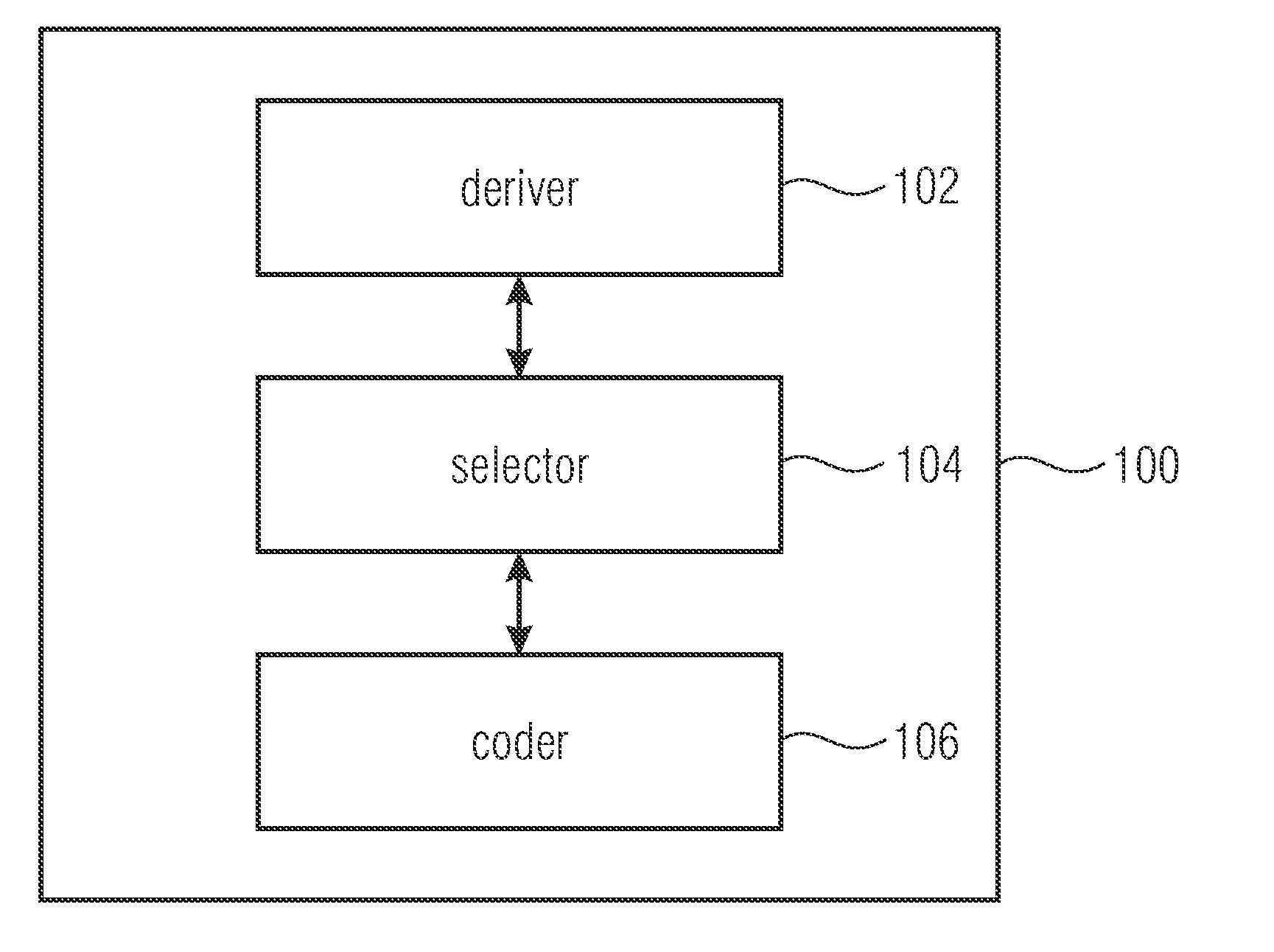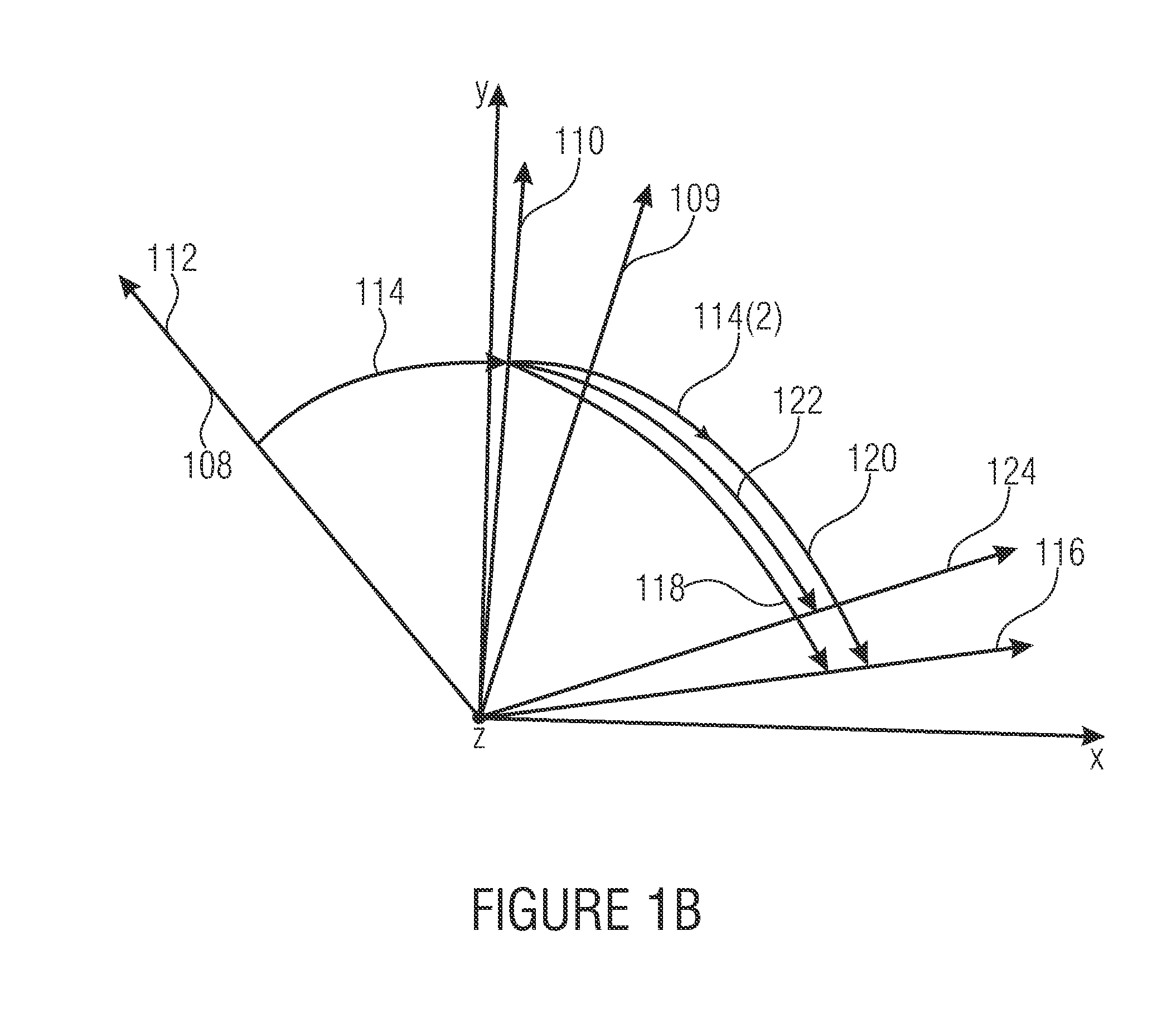Concept for encoding data defining coded orientations representing a reorientation of an object
a technology of coding data and object orientation, applied in image data processing, color television, television systems, etc., can solve the problems of abstraction and human readability, spatial-temporal data is not amenable to matching trajectories, coordinates are not intuitive for describing a trajectory, etc., to achieve the effect of reducing error propagation and high compression rate of spatio-temporal data
- Summary
- Abstract
- Description
- Claims
- Application Information
AI Technical Summary
Benefits of technology
Problems solved by technology
Method used
Image
Examples
Embodiment Construction
[0031]Equal or equivalent elements or elements with equal or equivalent functionality are denoted in the following description by equal or equivalent reference numerals.
[0032]FIG. 1a shows an encoder 100 for encoding data defining coded orientations representing a reorientation of an object based on spatio-temporal data representing a time series of orientations of the object. The encoder 100 comprises a deriver 102, a selector 104 and a coder 106. The deriver 102 is configured for deriving a plurality of components describing an orientation change difference between a last coded orientation change from a second last coded orientation to a last coded orientation, and a current orientation change from the last coded orientation to a current orientation of the object. The selector 104 is configured for selecting a component of the plurality of components describing the orientation change difference. The coder 106 is configured for coding the current orientation of the object based on ...
PUM
 Login to View More
Login to View More Abstract
Description
Claims
Application Information
 Login to View More
Login to View More - R&D
- Intellectual Property
- Life Sciences
- Materials
- Tech Scout
- Unparalleled Data Quality
- Higher Quality Content
- 60% Fewer Hallucinations
Browse by: Latest US Patents, China's latest patents, Technical Efficacy Thesaurus, Application Domain, Technology Topic, Popular Technical Reports.
© 2025 PatSnap. All rights reserved.Legal|Privacy policy|Modern Slavery Act Transparency Statement|Sitemap|About US| Contact US: help@patsnap.com



